
Tableware refers to the non-edible tools that come into direct contact with food when eating, and are used to assist food distribution or food intake. There are many kinds of tableware on the market; do you have any idea about the tableware you use?
Tableware is what we use every day. When using tableware, do you have the following questions: What kinds of tableware are there? What kind of tableware is better? How long can tableware last? How to choose tableware? Following, let's talk about it one by one.
- Ceramics Tableware
Ceramics have stable chemical properties and strong plasticity, and can be made into cups, dishes and spoons of various colors and shapes. Ceramic tableware has a smooth surface and is easy to clean. It has become the favorite tableware used by people all over the world. However, because ceramics are fragile, they are not resistant to falling and are easily damaged.
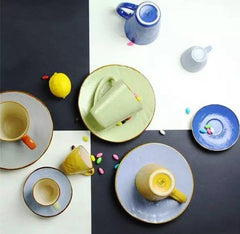
The materials of ceramic tableware are similar, they are all made of silicate, but the production process is different. Relatively speaking, ceramic tableware has the longest service life. It can be used for decades without damage, or even passed on to the next generation. There are beautiful patterns on the surface of ceramic tableware. The raw material of these patterns is called colorful glaze, which contains some heavy metals. Once the tableware is cracked or deformed, the lead element in these colorful glazes will take the opportunity to mix into the food, so ceramic tableware At this point it must be replaced.
Generally speaking, do not use ceramic tableware painted on the inner wall, and do not buy ceramic tableware with too bright colors. In order to make the color bright, the manufacturer will add some heavy metal additives to the glaze color. Therefore, the brighter the color of the tableware, the easier the heavy metal is to exceed the standard; in-glaze color and under-glaze color tableware with stricter raw materials and process control should be purchased.
-
Plastic tableware
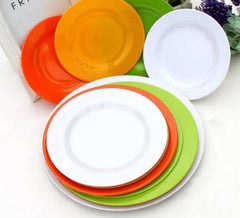
The service life of plastic tableware is very short, and it needs to be replaced in one or two months. If it is used for too long, some harmful molecules will be precipitated.
If the surface of your plastic tableware becomes rough and smells of plastic, then throw it away immediately. The service life of imitation porcelain plastic tableware is slightly longer than that of ordinary plastic tableware, but the tableware of this material is easily decomposed by acidic substances, that is to say, it is best not to use imitation porcelain plastic for acidic substances such as vinegar.
When choosing, you should choose plastic tableware that is colorless, odorless, and marked with the words PP and PE. When using plastic products, you must pay attention to the use of raw materials. The plastic that chokes the nose is polyvinyl chloride and cannot be used as food utensils. Be careful not to use plastic bottles for oil! Because the oil and plastic bottles will have a chemical reaction, because the plasticize in the plastic is easily soluble in the oil, the oil will have an odor.
-
Metal Tableware

Common metal tableware are copper tableware, iron tableware, stainless steel tableware, aluminum tableware, titanium tableware, silver tableware, gold tableware, etc, which are favored by consumers for their beautiful appearance, corrosion resistance and moderate price. Many people think that metal products are safe and can be used for life, but they are not.
Take the most common iron pot as an example. Once the oil layer protecting the surface of the iron pot falls off, the rust in the pot can easily cause nausea, vomiting, diarrhea, etc. If stainless steel is only in terms of life, its corrosion resistance will naturally stand the test, and it will not change much after decades of use. Stainless steel is made of iron-chromium alloys doped with metals such as nickel and molybdenum. If you buy unqualified stainless steel kitchen utensils, there may be hidden dangers of dissolving heavy metals such as chromium and nickel. Therefore, you must not be greedy and buy kitchen utensils that have no production date, no manufacturer, and no production address. As for copper utensils, it is easy to corrode and form green patina. If it enters the body with food, it will affect the body. Therefore, it is not recommended to use copper utensils as tableware for eating.
There is coated metal tableware in the home, when the tableware made of metal is found to be severely scratched, the surface paint or coating is peeled off, etc, and it should be replaced. Note that coated metal utensils should not be washed with steel wool.
-
Wooden Tableware
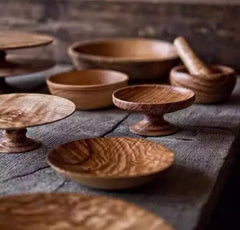
The biggest advantage of wooden tableware is that it is convenient to obtain materials, and there is no toxic effect of chemical substances. But their weakness is that they are more prone to contamination and mold than other tableware. If you do not pay attention to disinfection, it is easy to cause intestinal infectious diseases. The service life of wooden tableware is relatively short, and it usually needs to be replaced every two months. Wooden tableware and chopsticks must be sterilized every week. The best way is to cook. Do not use it if it is cracked, deformed or discolored.
Compared with bamboo chopsticks, wooden chopsticks are not so easy to use. Wooden chopsticks are easily deformed when exposed to high temperature, but bamboo chopsticks will not. Moreover, even mildew is mainly concentrated on the surface. It only needs to be washed and then cooked for about 5 minutes before continuing to use. . Don't favor painted wooden tableware too much, the more natural the better, and the more environmentally friendly and safe.
-
Glass Tableware

Glass tableware is a commonly used packaging container or contact utensil for food because of its crystal clear texture, clean and beautiful appearance, and good sealing performance, and is favored by more and more consumers. Glass tableware does not contain toxic substances, and the raw material is silicate like ceramic tableware. Glass tableware can generally be used for several years, as long as it is not broken. But if the surface of the tableware becomes rough (frosted) then it is definitely not of good quality. At this point it should be replaced with a new one.
There is no problem with the silicate material of glass, but crystal glass tableware is called "beautiful killer". Crystal glass tableware is a threatening source of lead pollution. It is no problem to hold water. If it is used to hold wine, cola, honey , fruit juice acidic foods, will form soluble lead salts infiltrated by the human body.
When buying glass tableware, pay attention to the raw material information and check the heat resistance specification. The quality of glass tableware on the market is mixed at present. If you do not know the applicable heating scale, it is easy to burst during use.
-
Imitation Porcelain Tableware
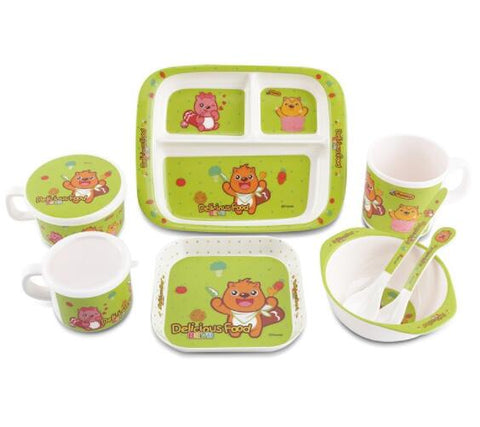
Imitation porcelain tableware is used more by children because it is resistant to falling. The high-quality imitation porcelain tableware has a long service life and can be used without breaking; but the imitation porcelain tableware of lower quality is recommended not to be used, because it is heated produce poison.
Imitation porcelain tableware with guaranteed quality can be used all the time without affecting the use, but it is best to replace it every two years. Imitation porcelain tableware with weak quality will produce free formaldehyde molecules if it is not processed maturely, and the harm of formaldehyde is self-evident. When buying imitation porcelain tableware, you must strictly check the product quality. Imitation porcelain tableware is not suitable for use in microwave ovens, which will cause cracking. Do not put imitation porcelain tableware in a pot to cook food. High temperature will cause toxic substances that may be contained in the tableware to precipitate. Food will destroy the balance of tableware materials and release toxic substances.
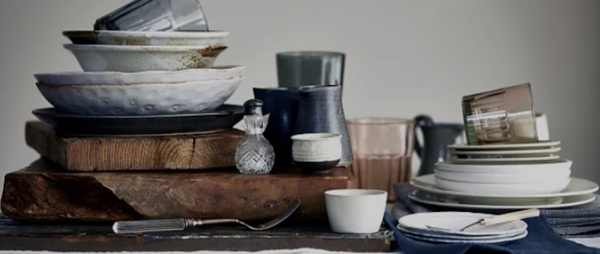
It is a mistake to use tableware without changing it for a long time, because tableware also has a service life. Tableware that has been used for more than two years is likely to have health effects.
Whether it is the material of the tableware or the use of it for a long time, it will affect your health. Hurry up to check your tableware, and throw away tableware that should be thrown away. The old does not go, the new does not come, giving you a reason to buy tableware.




















-400x400.jpg)
-400x400.jpg)
















-400x400.jpg)
-400x400.jpg)












-400x400.jpg)



-400x400.jpg)





-400x400.jpg)
-400x400.jpg)
-400x400.jpg)
-400x400.jpg)


-400x400.jpg)
-400x400.jpg)





Leave a comment